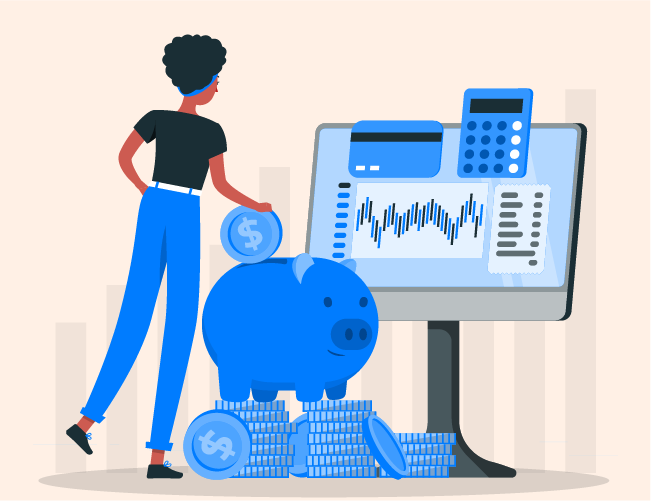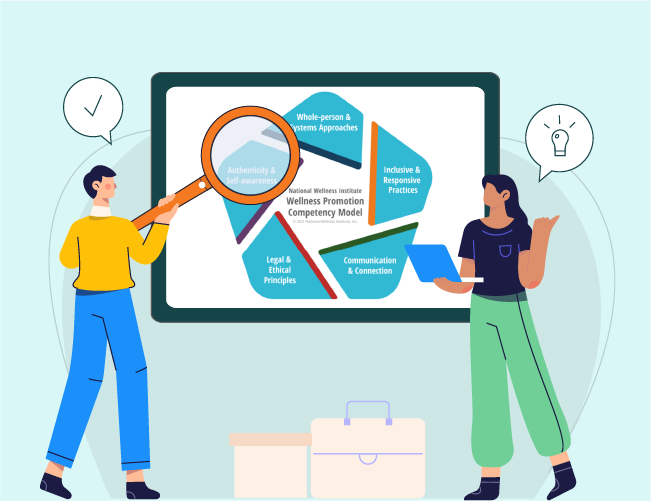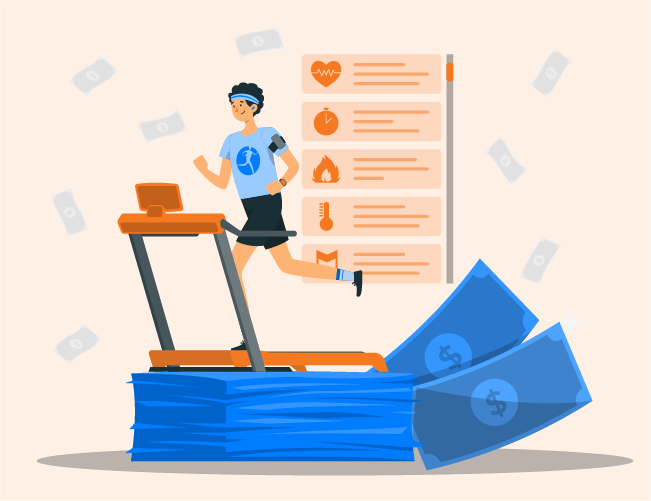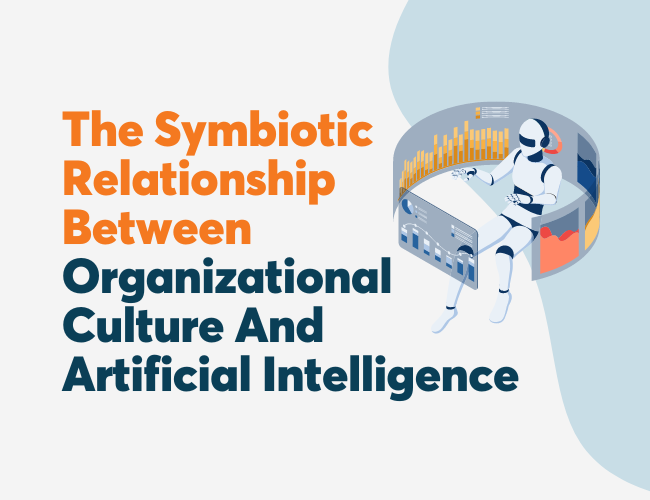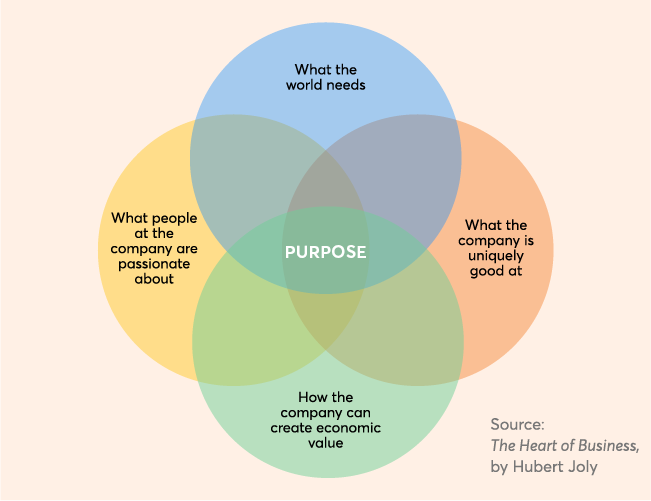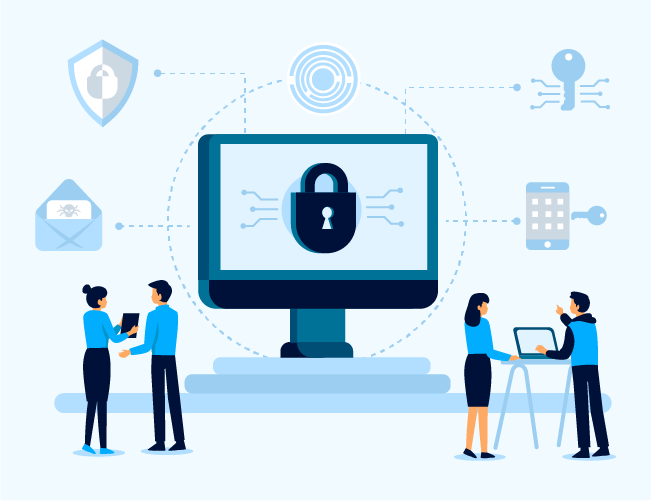There are a number of benefits to holding a virtual health fair. For example, virtual health fairs allow employees to attend from anywhere in the world, offer a wider range of vendors, require less planning, and are less expensive. But not all virtual health fairs are created equal. Some fail to include essential events. Others fail to properly market their fair, thereby leading to a smaller turnout. Other still fail to ensure that their attendees are adequately engaged with the events offered. By following the guide below, your company can ensure that it’s virtual health fair avoids these pitfalls and has a maximal impact on the well-being of its workforce.
Events
The first step to having a successful virtual health fair is to pick a good set of events. But what determines whether or not a virtual health fair event list is a good one? By and large, the answer is the same as it would be for on-site health fairs. First, a health fair should include “forward-looking” wellness events that expand each employee’s wellness toolkit, thereby placing them in a better position to maintain or improve their well-being. Second, health fairs should not only help employees learn how to be well after the event has concluded, but they should also be good for them while they are there. Finally, an effective health fair should draw positive attention to your brand.
“Forward-Looking” Wellness Events
There are a wide range of events that are designed to make it easier for employees to maintain or get back to a state of wellness. The following options are a great starting point.
- Benefit Provider Booths: Traditionally, on-site health fairs are a chance to showcase your company’s benefit providers. It’s an opportunity for employees to meet with these providers face-to-face and learn more about their services. Virtually, you can offer your employees the same experience by scheduling each provider to give a webinar and/or offer one-on-one meeting opportunities with employees.
- Wellness Education Webinars: Bring in experts to teach employees how to stay healthy with educational wellness webinars. When adding these events, keep in mind that wellness extends beyond just physical health. It also includes mental health, financial health, intellectual health and more.
- Work From Home Ergonomics Consults: Individual ergonomic consults can help employees adjust their work from home set up to help them avoid the aches and pains of improper ergonomics.
- Health Coaching: Knowing what to do to be well only translates into wellness if one is willing to put the work in. Health coaches help participants make positive behavior changes and engage in healthy lifestyle habits, such as exercise and stress management.
“Wellness Now” Events
Many employees who attend health fairs are not only looking to learn how to improve their well-being going forward, but they also want to leave the fair better off than when they walked in. In other words, they want wellness now. The following events are a great way to give these attendees what they are looking for.
- Fitness Classes: Virtual health fairs are a great opportunity to work in fitness activities. Think outside the box and consider classes, such as tai chi, self-defense, and kickboxing.
- Relaxation/Self-Care Opportunities: Employees are both physically and mentally exhausted after 2021. Use your virtual health fair to give your employees some time to relax. Self-massage, self-reflexology, and yoga nidra are all perfect virtual relaxation events.
- Just For Fun Events: When planning your event, go beyond the traditional events and book a few services just for fun, like a mocktail class or photo booths with comical digital props.
Attendance And Engagement
A good set of events will only enhance the well-being of your workforce if employees attend them and engage with the information they provide. By following the advice below, your health fair will draw in more employees, increase the number of events they attend, and keep them focused on acquiring the knowledge they need to be well.
Attendance
Virtual health fairs tend to have higher turnouts than their on-site counterparts. That being said, even when the fair is virtual, there are couple of measures, like the ones below, worth taking.
- Internal Marketing: Employees will only attend your event if they know about it. Be sure to announce it at least a month in advance. Then, keep them informed about it through email, posters, flyers, and social media posts. Once the event has started, consider posting to social media as a final push for a great turnout
- Event Recordings: Take advantage of the fact that your event is being held virtually by recording it. That way, even if your employees are not able to attend a session live, they can view the events they need to at a time that is most convenient for them.
Engagement
When content is consumed through one’s computer screen, it’s harder to pay attention to it. This means that in virtual health fairs, attendees are at a greater risk of failing to engage with the content being delivered to them. Because of this, virtual health fairs need to contain elements that are designed to make paying attention less effortful or intensify the desire to pay attention. This can be accomplished by including:
- Rewards: For those employees that could use some extra motivation to engage with the material, rewards can be a big help. Think about offering your employees the chance to win giveaways and wellness points by passing quizzes on the information presented in your events.
- Chat Rooms And Help Desks: Many people are afraid to ask questions in front of large groups. Features like a live chat or online helpdesks are a great way to reduce social anxiety and suss out questions that otherwise would not have been asked.




